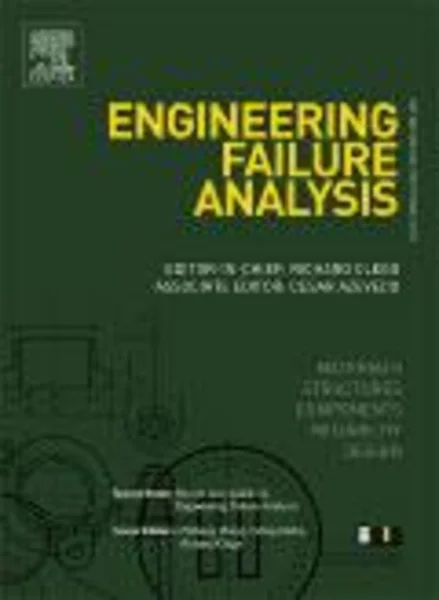-
investigation of failure behavior of two different types of zircaloy clad tubes used as nuclear reactor fuel pins
جزئیات بیشتر مقاله- تاریخ ارائه: 1390/01/01
- تاریخ انتشار در تی پی بین: 1390/01/01
- تعداد بازدید: 587
- تعداد پرسش و پاسخ ها: 0
- شماره تماس دبیرخانه رویداد: -
nuclear reactor fuel pins act as barriers to the release of radioactive fission products to the coolant flowing around these thin-walled tubes and hence they prevent the leakage of radioactivity to the surroundings of reactor core. these tubes are of small thickness in order to have less resistance in the path of heat flow from the fuel to the coolant. investigation of failure behavior of these fuel clad tubes is of utmost importance to the designers and plant operators in order to ensure the maximum residence time of the fuel bundles inside the reactor core as well as to ensure minimal activity during operation and refueling activities. various types of zirconium based alloys are used to manufacture these pins. the focus is to obtain better strength, ductility, corrosion resistance, oxidation resistance, and minimal creep including those due to irradiation-assisted damage and deformation processes. two number of such types of alloys, namely, re-crystallization annealed zircaloy-2 and stress-relief annealed zircaloy-4, have been investigated in this work for their fracture behavior. as standard fracture mechanics specimens cannot be machined from these thin-walled tubes, non-standard specimens with axial cracks have been used in this work. load normalization technique has been used to evaluate crack growth during loading of these specimens. it was observed that the re-crystallization annealed zircaloy-2 specimens have higher initiation fracture toughness as well as higher resistance to crack growth compared to the other type of specimens. in order to understand the micro-structural aspects of the fracture resistance behavior of these materials, further investigation incorporating optical and transmission electron microscopy have also been carried out. it was concluded that the higher fracture resistance behavior of the re-crystallization annealed zircaloy-2 specimens can be attributed to the presence of finer grain and sub-grain micro-structure, very low dislocation density and other defects in the material.
مقالات جدیدترین رویدادها
-
استفاده از تحلیل اهمیت-عملکرد در ارائه الگوی مدیریت خلاقیت سازمانی و ارائه راهکار جهت بهبود
-
بررسی تاثیر ارزش وجوه نقد مازاد بر ساختار سرمایه شرکت های پذیرفته شده در بورس اوراق بهادار تهران
-
بررسی تأثیر سطح افشای ریسک بر قرارداد بدهی شرکت های پذیرفته شده در بورس اوراق بهادار تهران
-
بررسی تأثیر رتبه بندی اعتباری مبتنی بر مدل امتیاز بازار نوظهور بر نقد شوندگی سهام با تأکید بر خصوصی سازی شرکت ها
-
تأثیر آمیخته بازاریابی پوشاک ایرانی بر تصویر ذهنی مشتری پوشاک ایرانی (هاکوپیان)
-
مقایسه اثر آنتی میکروبیال گوتاپرکای حاوی کلسیم هیدروکساید و خمیر کلسیم هیدروکساید
-
کاربرد تبدیل موجک پیوسته در تشخیص ناهنجاری محتوای کل چگالی الکترون قائم زلزله ی اهر، ایران، 11 آگوست 2012
-
بررسی تأثیر گودبرداری بر میزان خسارت وارده به سازه های بالادست
-
استفاده از اراضی بستر رودخانه ها و منابع آبی (بر اساس قوانین و مقررات)
-
ارزیابی عملکرد شهرهای جدید ایران در جذب سرریز جمعیت مادرشهرها (مطالعه موردی: شهر جدید مجلسی)
مقالات جدیدترین ژورنال ها
-
مدیریت و بررسی افسردگی دانش آموزان دختر مقطع متوسطه دوم در دروان کرونا در شهرستان دزفول
-
مدیریت و بررسی خرد سیاسی در اندیشه ی فردوسی در ادب ایران
-
واکاوی و مدیریت توصیفی قلمدان(جاکلیدی)ضریح در موزه آستان قدس رضوی
-
بررسی تاثیر خلاقیت، دانش و انگیزه کارکنان بر پیشنهادات نوآورانه کارکنان ( مورد مطالعه: هتل های 3 و 4 ستاره استان کرمان)
-
بررسی تاثیر کیفیت سیستم های اطلاعاتی بر تصمیم گیری موفق در شرکتهای تولیدی استان اصفهان (مورد مطالعه: مدیران شرکتهای تولیدی استان اصفهان)
-
اصول طراحی زمین بازی کودکان براساس تصورات کودکانه نمونه موردی : پارک های منطقه یک شهر زنجان
-
چگونگی و حد و حصر رابطه دختر و پسر قبل از ازدواج از نظر آیات و روایات
-
جایگاه فقهی و حقوقی معاملات معارض در حقوق موضوعی ایران
-
طراحی چارچوبی برای مدیریت منابع انسانی کارآفرین محور در بخش دولتی
-
بررسی رابطه بین مدیریت سود مبتنی بر فروش دارائی های بلندمدت و وجوه نقد حاصل از عملیات در شرکت های پذیرفته شده در بورس اوراق بهادار تهران




سوال خود را در مورد این مقاله مطرح نمایید :